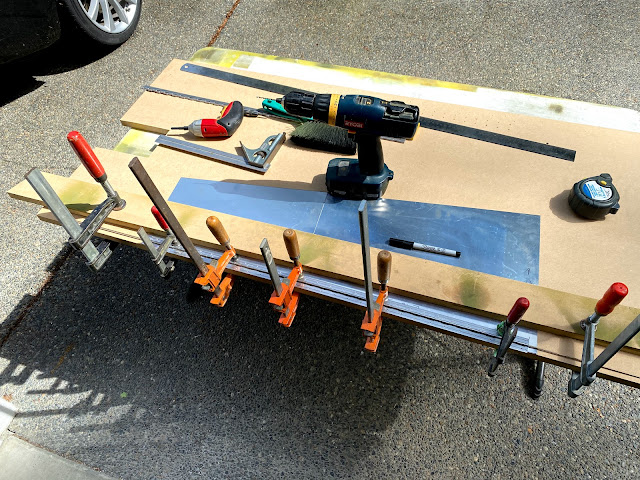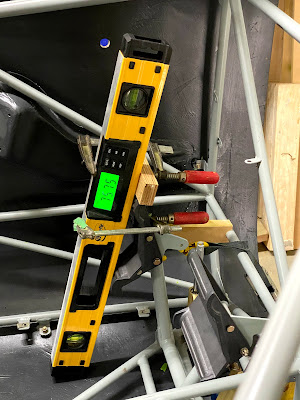Back in January 2021 I purchased the upper cable cover from Glasair. Well, finally getting around to installing it.
On newer Sportsman cages, there are 4 tabs along the front that it mounts to. I don't have those.
My plan is to pickup to outer fuselage mounts on the front, then make a bracket that can be hose clamped to the cage tube in the middle. The rear will be 4 composite L brackets bonded to the fuselage shell. This is how Glasair does it (well, the rear at least).
So far the cover has required a bit of tweaking. The cutouts for the tabs shown in the picture were not present, and the outer contour did not match my cage tubes. But was still a lot better than building the whole thing! Also, I don't think the cover will fit with the vertical cable covers.... but will find out shortly.
The crossover cable cover definitely interferes with the vertical covers. So I marked it out using templates, and cut it back using a dremel and drum sander. The starboard side cover was interfering with the diagonal tube off the horizontal bar under the seat, so it was dealt with as well.
Then there is the seat belt harness bar. There appears to be no provisions for the harness bar clamps in the vertical pillar cover. So these corners were 'relieved' to make it all fit.
All the cuts need to be cleaned up, and I am going to wrap the vertical pillar covers. Depending on the extent of refinishing for the crossover cover I will either leave it or repaint the same as everything else. Undecided at this point.
My main point of 'pissed-off-ness'. The vertical covers were finished. The crossover cable was finished. The harness bar was designed and published AFTER both the vertical and crossover covers were purchased. WHY THE HELL DO THEY NOT FIT.
My cage had the 3 point bracket on the vertical pillar, and the cover did not have a clearance for that. Well, I get it. Due to its age, that makes sense. But it doesn't have the provision for the harness bar either. So what gives? One of the two options should have a provision to mount it. This is EXACTLY why I get so frustrated with Glasair. Someone just IS NOT THINKING.
Rant off.
First composite L bracket bonded for the crossover cable cover.To make the L bracket, took 2 pieces of 3" wide MDF and screwed them together. Then applied liberal amounts of packing tape. 6 layers of cloth, with peel ply on top. Cure overnight, pop out of mold, run through table saw to straighten the edge and then chop into 1.25" sections.
Covered the area with aluminum tape, leaving the area to be sanded exposed. Sand, vacuum, etc. Mixed up a batch of thick resin / cabosil / milled fibres. Was thick enough to hold itself in place while bonding.
3 more to go! Should be easy now that I have a process...
All in. Just needs to dry.My brother in law gave me a big roll of aluminum tape, and I used it to mask off the sections for sanding and bonding. Once bonded, just pull it off. Seems to work well.
Pilot holes drilled through the crossover cable cover and aft tabs. Now onto fasteners. Using #8 captive fasters and not self tapping screws.



















































